#kuchi tribe
Text

Nomadic Kuchi women and girls near a Mosque on the outskirts of Herat, Afghanistan 1973
#afghanistan#herat#kuchi#kochi#afghan#afghan culture#afghan people#kochi tribe#kuchi tribe#photography#70s#70s afghanistan#own post
18 notes
·
View notes
Text

2.11.24
#fantastics from exile tribe#fantastics#kimura keito#nakajima sota#jr exile#jpop#けとそた#ketosota kuchi peace!!!!!!!!!!#sooooo cuteeee TT_TT#congratulations on your first day of the tour my loves!!!!!!!!❤️❤️❤️❤️❤️#im still working on a keichan kuchi peace collection but it may end up being two parts lol theres so many
5 notes
·
View notes
Text
Traces of Dravidian languages in North India & Pakistan
Some estimates suggest that there are between 100 to 200 Dravidian loanwords in Balochi:
Akni - Rice (from the Dravidian word "akkan")
Bhat - Rice (from the Dravidian word "paddi")
Bar - Big (from the Dravidian word "peru")
Chamak - Shine (from the Dravidian word "chamakka")
Cheez - Thing (from the Dravidian word "sizha")
Danka - Bell (from the Dravidian word "tanka")
Daraz - Long (from the Dravidian word "tarai")
Dasht - Desert (from the Dravidian word "takkam")
Dhoro - Stream (from the Dravidian word "dorai")
Dosi - Friend (from the Dravidian word "tozi")
Dunya - World (from the Dravidian word "taniya")
Ghan - Garden (from the Dravidian word "kanne")
Ghash - Grass (from the Dravidian word "kacca")
Ghom - Bend (from the Dravidian word "kombu")
Gich - Thicket (from the Dravidian word "kitchi")
Gida - Cow (from the Dravidian word "kudai")
Gosht - Meat (from the Dravidian word "kozhi")
Gwadar - Port (from the Dravidian word "katara")
Kach - River (from the Dravidian word "kacca")
Kachkool - Beggar (from the Dravidian word "kaccha")
Kaj - Glass (from the Dravidian word "kaccha")
Kandah - Blind (from the Dravidian word "kandu")
Kanjar - Itinerant tribe (from the Dravidian word "kanchari")
Kapar - Cloth (from the Dravidian word "kappar")
Karkhan - Workshop (from the Dravidian word "karkhana")
Kharboza - Melon (from the Dravidian word "karbu")
Kuch - Key (from the Dravidian word "kuchi")
Kufri - Potato (from the Dravidian word "kukkiri")
Kup - Pot (from the Dravidian word "kuppi")
Kurr - Pot (from the Dravidian word "kudam")
Laddu - Sweet (from the Dravidian word "laddu")
Lar - Stream (from the Dravidian word "alaru")
Las - Leaf (from the Dravidian word "ilai")
Mach - Fish (from the Dravidian word "matsya")
Makaan - House (from the Dravidian word "makkan")
Makan - Mat (from the Dravidian word "mattai")
Makkol - Ant (from the Dravidian word "makkoli")
Manj - Cot (from the Dravidian word "manjai")
Menj - Bed (from the Dravidian word "menju")
Mitha - Sweet (from the Dravidian word "mitai")
Moch - Goat (from the Dravidian word "mokka")
Munda - Boy (from the Dravidian word "munda")
Naga - Naked (from the Dravidian word "naga")
Nagin - Snake (from the Dravidian word "nagini")
Nara - Man (from the Dravidian word "nara")
Nari - Woman (from the Dravidian word "nari")
Naram - Soft (from the Dravidian word "naramu")
Naukri - Job (from the Dravidian word "nokku")
Pakka - Cooked (from the Dravidian word "paka")
Palang - Bed (from the Dravidian word "palanku")
Palki - Palanquin (from the Dravidian word "palaku")
Pani - Water (from the Dravidian word "pani")
Panyar - Flour (from the Dravidian word "paniyaram")
Pashmina - Wool (from the Dravidian word "pashm")
Phana - Snake (from the Dravidian word "pana")
Phanda - Trap (from the Dravidian word "phandu")
Pind - Village (from the Dravidian word "pindu")
Pukka - Solid (from the Dravidian word "pukka")
Rait - Sand (from the Dravidian word "arai")
Rang - Color (from the Dravidian word "rang")
Resham - Silk (from the Dravidian word "rezham")
Roh - Sun (from the Dravidian word "ravi")
Saman - Goods (from the Dravidian word "samana")
Sanj - Evening (from the Dravidian word "santati")
Sanni - Gold (from the Dravidian word "sonne")
Sardar - Leader (from the Dravidian word "sardara")
Sardi - Cold (from the Dravidian word "sardi")
Sark - Brocade (from the Dravidian word "sarkara")
Saunf - Fennel (from the Dravidian word "sombu")
Saz - Decoration (from the Dravidian word "sajja")
Seeng - Horn (from the Dravidian word "singam")
Sosan - Jasmine (from the Dravidian word "champaka")
Sumbal - Hyacinth (from the Dravidian word "chambakam")
Sur - Tune (from the Dravidian word "suram")
Surma - Kohl (from the Dravidian word "surmai")
Tamaash - Entertainment (from the Dravidian word "tamasha")
Taweez - Amulet (from the Dravidian word "tavi")
Thor - Arrow (from the Dravidian word "turu")
Tunda - Sharp (from the Dravidian word "tundu")
Tunk - Hard (from the Dravidian word "tunku")
Tutak - Parrot (from the Dravidian word "tuti")
Uch - High (from the Dravidian word "ucchi")
Udan - Flight (from the Dravidian word "udan")
Umar - Age (from the Dravidian word "umaru")
Utar - Descend (from the Dravidian word "utarai")
Wari - Fort (from the Dravidian word "varai")
Yak - One (from the Dravidian word "yeka")
Zang - Bangle (from the Dravidian word "sangam")
Zarak - Gold (from the Dravidian word "sarakku")
Zard - Yellow (from the Dravidian word "jara")
Zaheen - Intelligent (from the Dravidian word "sahana")
Zangi - Black (from the Dravidian word "kari")
Ziarat - Pilgrimage (from the Dravidian word "chariya")
Zulfa - Tassel (from the Dravidian word "sulka")
It is generally believed that Sindhi has a significant number of words from Dravidian languages. Some estimates suggest that there are around 300 to 400 Dravidian loanwords in Sindhi, although the actual number may be higher or lower.
Prakrit
Acala (from Tamil "akalam," meaning time)
Aditi (from Tamil "aditi," meaning free from bonds)
Agara (from Tamil "akaram," meaning letter)
Ajagara (from Tamil "acankaram," meaning python)
Ajina (from Tamil "acanam," meaning skin)
Akasa (from Tamil "akasam," meaning sky)
Amba (from Tamil "ambu," meaning water)
Ambara (from Tamil "amparam," meaning clothing)
Ambaraṣa (from Tamil "amparacca," meaning shade)
Amma (from Tamil "amma," meaning mother)
Aṃsa (from Tamil "ampu," meaning shoulder)
Anila (from Tamil "anilam," meaning wind)
Apa (from Tamil "appa," meaning water)
Arjuna (from Tamil "arijuna," meaning white-flowered myrobalan)
Asa (from Tamil "acai," meaning hope)
Asana (from Tamil "asanam," meaning seat)
Aṭa (from Tamil "atta," meaning grain)
Avarodha (from Tamil "avarodam," meaning obstacle)
Ayasa (from Tamil "ayacu," meaning iron)
Ayya (from Tamil "acca," meaning father)
Baddha (from Tamil "vattam," meaning circle)
Bhadda (from Tamil "pattam," meaning cloth)
Bhanda (from Tamil "pandam," meaning vessel)
Bhava (from Tamil "pava," meaning being)
Bheda (from Tamil "petai," meaning division)
Bhrasta (from Tamil "purasadam," meaning ruined)
Bila (from Tamil "vilai," meaning hole)
Bimba (from Tamil "vimpu," meaning image)
Bujanga (from Tamil "puzhankam," meaning serpent)
Cakra (from Tamil "cakkaram," meaning wheel)
Camma (from Tamil "camai," meaning garment)
Candana (from Tamil "kantu," meaning sandalwood)
Candra (from Tamil "candram," meaning moon)
Carma (from Tamil "carimam," meaning skin)
Caru (from Tamil "caru," meaning rice)
Casaka (from Tamil "cakkaram," meaning pot)
Cattra (from Tamil "cattiram," meaning heroic deed)
Catura (from Tamil "catiram," meaning clever)
Caura (from Tamil "cavarai," meaning thief)
Cela (from Tamil "celam," meaning cloth)
Cesta (from Tamil "cetam," meaning action)
Citra (from Tamil "citiram," meaning picture)
Culla (from Tamil "cuḷḷam," meaning group)
Dadhi (from Tamil "tati," meaning curd)
Dana (from Tamil "tana," meaning wealth)
Danta (from Tamil "tantu," meaning thread)
Daru (from Tamil "taram," meaning wood)
Dhana (from Tamil "tana," meaning wealth)
Dhamma (from Tamil "tamam," meaning religious doctrine)
Dhanu (from Tamil "tani," meaning bow)
Dosa (from Tamil "tosai," meaning pancake)
Duhkha (from Tamil "tukkam," meaning sorrow)
Dvipa (from Tamil "tivam," meaning island)
Gada (from Tamil "kattai," meaning stick)
Gandha (from Tamil "kandam," meaning fragrance)
Gata (from Tamil "kadam," meaning gone)
Gaya (from Tamil "kai," meaning hand)
Ghata (from Tamil "katam," meaning jar)
Giri (from Tamil "kiri," meaning mountain)
Godha (from Tamil "kotai," meaning pond)
Godhuma (from Tamil "kothumai," meaning wheat)
Gola (from Tamil "kollam," meaning circle)
Gopura (from Tamil "kovil," meaning temple)
Guna (from Tamil "kunam," meaning quality)
Guti (from Tamil "kuti," meaning hut)
Hamsa (from Tamil "amsam," meaning swan)
Hasti (from Tamil "asti," meaning elephant)
Himavat (from Tamil "himam," meaning snow)
Iṣa (from Tamil "icai," meaning lord)
Jala (from Tamil "jalam," meaning water)
Jantu (from Tamil "jantu," meaning animal)
Jaya (from Tamil "jayam," meaning victory)
Jina (from Tamil "canam," meaning victory)
Jivha (from Tamil "cipam," meaning tongue)
Jnana (from Tamil "nanam," meaning knowledge)
Kacca (from Tamil "kacai," meaning green)
Kala (from Tamil "kalai," meaning art)
Kalya (from Tamil "kali," meaning sport)
Kama (from Tamil "kamam," meaning desire)
Kanta (from Tamil "kantam," meaning beloved)
Kara (from Tamil "karai," meaning shore)
Karman (from Tamil "karamam," meaning action)
Karu (from Tamil "karu," meaning embryo)
Karya (from Tamil "karyam," meaning work)
Kasa (from Tamil "kacai," meaning cough)
Kastha (from Tamil "kasam," meaning stick)
Kavaca (from Tamil "kavacam," meaning armor)
Kaya (from Tamil "kai," meaning body)
Kesa (from Tamil "kesam," meaning hair)
Khara (from Tamil "karai," meaning salty)
Kirti (from Tamil "kiruttam," meaning fame)
Kosa (from Tamil "kosam," meaning treasury)
Krsna (from Tamil "karuṇai," meaning black)
Kula (from Tamil "kudai," meaning family)
Kumara (from Tamil "kumaran," meaning youth)
Kumbha (from Tamil "kumpai," meaning pot)
Kusa (from Tamil "kusam," meaning grass)
Lata (from Tamil "ilai," meaning leaf)
Lavana (from Tamil "lavanam," meaning salt)
#balochi#pakistan#brahui#indus valley#meluhha#melakam#india#south asia#ancient civilizations#ancient civilization#history#linguistics
3 notes
·
View notes
Text
New India Fashion Jewelry USA

About us - Newindiahandicrafts
Dear Friends, This is Dharam from New India Handicrafts and we have good collection of Resin Beads in all shapes and colors, please give me a chance to serve you once. Customer satisfaction is Our Priority. Our store has numbers of Types Jewelry and Products As Your Need. We can make as per Your requirement.
Dear Friends, This is Dharam from New India Handicrafts and we have good collection of Resin Beads in all shapes and colors, please give me a chance to serve you once. Customer satisfaction is Our Priority. Our store have numbers of Types Jewelry and Products As Your Need. We Can Make as per Your requirement.
Tribal Tibetan Banjara Belly Dance Gypsy Boho
"Tribal Tibetan Banjara Belly Dance Gypsy Boho" seems to be a combination of various cultural and dance elements. Let's break it down:
Tribal: Tribal dance generally refers to traditional dances performed by indigenous communities or tribes. It often emphasizes community participation, rhythmic movements, and storytelling.
Tibetan: Tibetan dance encompasses a variety of traditional dance forms from Tibet, a region located in the Himalayas. Tibetan dances often reflect the rich cultural heritage of the Tibetan people and are performed during festivals, religious ceremonies, and social gatherings.
Amber Look Resin Beads Necklace
An Amber Look Resin Beads Necklace refers to a necklace made with resin beads that mimic the appearance of amber. Here's some information about each element:
Amber Look: Amber is a fossilized tree resin that has been prized for its beauty and rarity for centuries. It is often used in jewelry due to its warm, golden color and natural patterns. The term "Amber Look" indicates that the necklace is made with materials that resemble the appearance of amber but may not necessarily be genuine amber.
Resin Beads: Resin is a synthetic material often used as a substitute for natural materials like gemstones or amber. Resin beads are made by casting or molding liquid resin into various shapes and sizes. They can be designed to imitate the look of amber, including its color, translucency, and texture.
Handmade Gypsy Vintage Tribal Banjara Kuchi Afghan Stone Glass
A Handmade Gypsy Vintage Tribal Banjara Kuchi Afghan Stone Glass piece refers to a handmade item that combines elements of various cultural and vintage styles. Let's break down the different components:
Handmade: The item is crafted by hand rather than being mass-produced. Handmade items often have a unique and artisanal quality, showcasing the skills and creativity of the maker.
Gypsy: Gypsy style often draws inspiration from the vibrant and bohemian aesthetics associated with Romani culture. It is characterized by a mix of bold colors, eclectic patterns, and free-spirited designs.
Vintage: Vintage refers to items that are at least a few decades old, typically from a particular era or time period. Vintage pieces can have a nostalgic or classic appeal and often carry historical or cultural significance.
Necklace Resin
A necklace made of resin refers to a jewelry piece where the primary material used to create the beads or pendant is resin. Resin is a synthetic material that can be molded and shaped into various forms. It is commonly used in jewelry-making as it offers versatility and the ability to create unique designs.
Here are a few things to know about resin necklaces:
Resin Types: Resin can be made from different materials, including epoxy resin, polyester resin, or polyurethane resin. Each type has its own characteristics, such as clarity, hardness, and durability. Epoxy resin is commonly used in jewelry making due to its transparency and ability to preserve objects embedded within it.
Beads or Pendant: Resin necklaces can feature either resin beads or a resin pendant as the centerpiece. Resin beads can be made in various shapes, sizes, and colors, allowing for endless design possibilities. A resin pendant is a larger, focal piece that is typically handcrafted and may contain embedded elements like flowers, shells, or glitter.
https://www.ebay.com/str/newindiahandicrafts
0 notes
Link
Check out this listing I just added to my Poshmark closet: Vintage Tribal Kuchi Lapis Teardrop Boho Necklace.
0 notes
Link
Check out this listing I just added to my Poshmark closet: Modernist Necklace Purple Kuchi Tribe Metal Fan Design Vintage 23 Inches.
0 notes
Photo

Kuchi men, Ghazni.
Source: Victor Englebert
#afghanistan#afghan#afghan people#afghan man#man#men#male#people#kutchi#kuchi#kochi#pashtun#pakhtun#pathan#nomad#nomadic#tribe#tribal#shepherd#rural#life#humanity#turban#kohl#eyeliner#muslim#ghazni#traditional
109 notes
·
View notes
Text
WMaM - Jewelry & Tattoos
Alrighty, so I’ve had a number of folks ask me for specifics on the different ways people decorate themselves in the WMaM world. As this topic is a massive love of mine, it’s gonna be long and full of photos. xD Buckle up!
What is the general jewelry aesthetic?
I took a TON of inspiration from Kuchi and Ottoman jewelers, especially the styles made in the 18th century and later. I’m also a HUGE fan of raw stone, metal, and organic designs, so I threw those in for good measure. Here are some pieces you would likely see in WMaM:
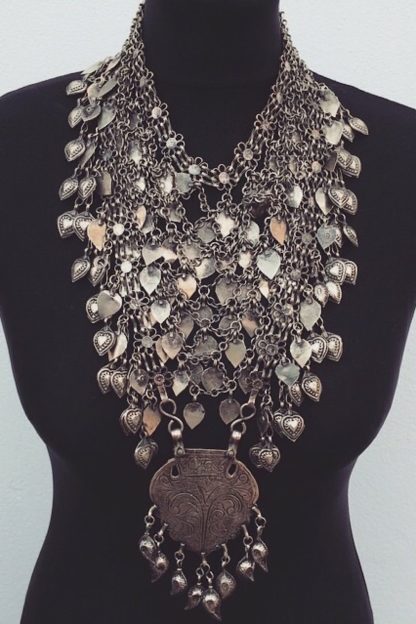


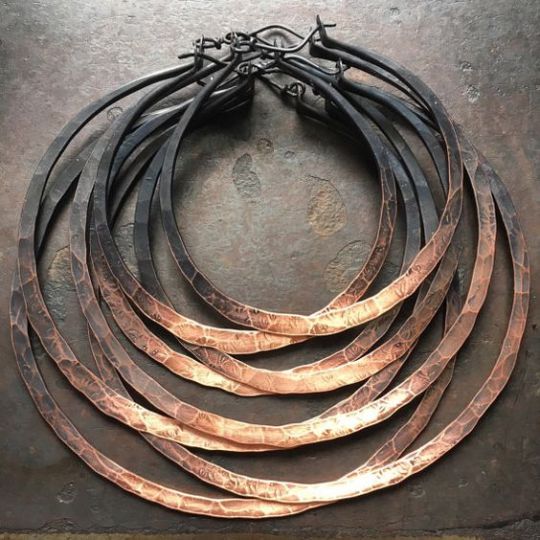
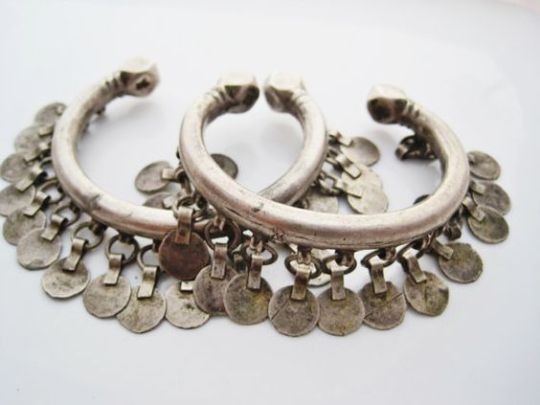
Why does everyone wear so much?
Jewelry = Money
Not in the “I’m wealthier than thou” sense, but the “I’ll trade you this bracelet for a meal and room” sense. It’s almost impossible to set up one single currency considering how many tribes and city states there are in the desert so everyone works with a barter system of different goods. Is it always fair? No, but it is pretty.
Are some pieces magical?
Absolutely! A lot of jewelry is magical, actually. It’s usually for small stuff; a necklace that changes colors depending on the incoming weather, a ring that can’t be stolen, anklets that make you lighter, earrings that whisper reminders throughout the day. The really powerful stuff is less common, not because they’re rare, but because they tend to be unpredictable. You’re either wildly strong or incredibly stupid if you try messing with the heavily magicked stuff.
Do you have details about specific character’s jewelry?
You bet I do! 😎(I’m only listing Kiri and Baku for now, cause this would become a ridiculously long post otherwise.)
Kirishima wears a lot of silver and dark wood and most of his pieces are heavy and large. Examples include:
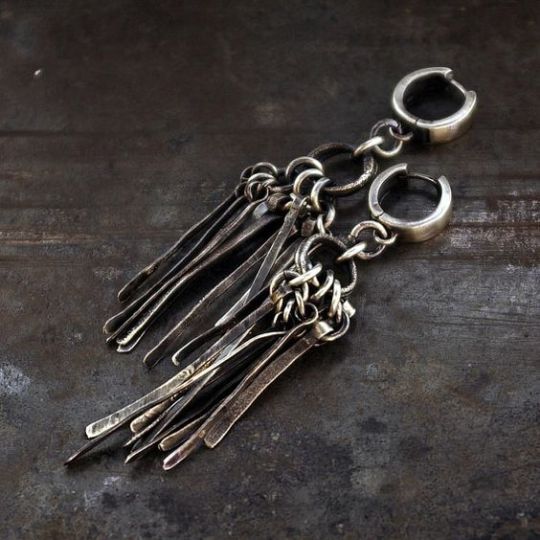


Bakugou leans more towards the organic designs that his region is famous for, especially things like obsidian and bone. Some examples of pieces he’d wear:

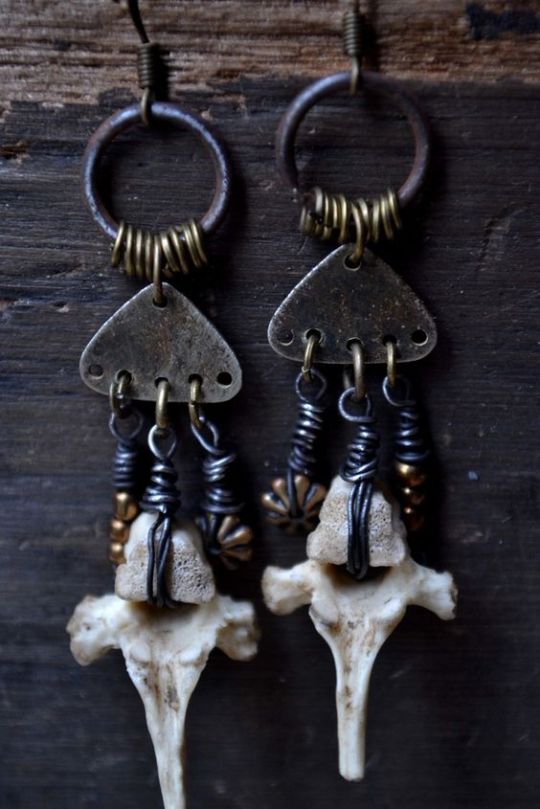

What about tattoos? Are they important?
Easy answer? Hella important.
Each region has its own customs and styles, but in general, tattooing is encouraged and usually comes bundled with SOME level of meaning. Remember, this is the desert; whether you’re nomadic or not, the world is in a constant state of flux around you. Having permanent reminders of important events, beautiful memories, or personal stories is incredibly valuable.
Are tattoos magical?
Some! It depends on the artist. Most tattoos are just plain ink, but some mages and cambions (hybrids with magical abilities) can channel their magic into their artwork. It’s not really advised because magic can be unpredictable and chaotic, but it can produce amazing results. Again, the simpler the magic, the less chance of a negative outcome.
How about some examples?
I’ll use Baku and Kiri again, but let me know if you want to see other characters’ tattoos as well!
Kirishima’s talon tats:

Bakugou’s forearm tat inspiration (both arms are slightly different):

Wow, so, yeah, that was long like I thought and I could have easily kept going. xD I hope you enjoyed it at least!
For more WMaM info, check out the master list HERE!
#wmam#wmam lore#what makes a man#jewelry and tattoos#worldbuilding#lorelei's brain literally never shuts off#bnha#boku no hero academia#kiribaku#kirishima eijirou#bakugou katsuki#bnha fantasy au#bnha fantasy fic#bnha ao3#long post#my writing
26 notes
·
View notes
Photo

Kuchi ethnic Afghan tribal cuff bracelet. Such kuchi jewelry is perfect for a Bohemian Gypsy Boho look. Originally from the lands of the Kuchi tribe, Afghan kuchi tribal ethnic bracelet in green turquoise resin. This Gypsy Boho style bracelet is hand carved with very fine details by the famous craftsmen of the Kuchi tribe, who have been making such jewelry from centuries. This art has been transferred to them from their ancestor and they are still keeping this art alive with very little modification to the designs. With very little access to modern technology, these talented artists are still using manually operated machines, but doing most of the work by hands, making their art unique. As a tradition, these jewelries are gifted within the family from one generation to another, usually a newly wed bride. Great for bohemian carnivals, Burning Man and music festivals.
Get Free Shipping
10 notes
·
View notes
Photo

Tribal Hoop Earrings- Afghan jewelry- Kuchi earrings- Vintage large hoop earrings- Ethnic tribe jewelry- Jewelry- Baloch earrings- Jewelry by ZamarutJewel
0 notes
Photo

KUCHI JEWELRY: HISTORY AND VALUE OF WHOLESALE KUCHI JEWELRY History of Kuchi Jewelry Kuchi jewelry is local ethnic jewelry of the Afghan / Pashtun tribe " Kuchi ". Kuchi tribal people move from one place to another. They are basically nomadic gypsies who live around mountainous regions of Afghanistan and the western side of Pakistan. They are also known as Pakhtun or Pashtun. Kuchi tribes also have been wandering around Central Asia, Middle East. However, the culture has remained in most par... — view on Instagram https://ift.tt/3fJNSjM
0 notes
Text
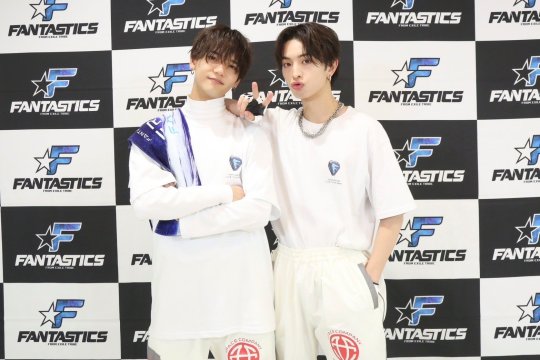

2.24.24
#fantastics from exile tribe#fantastics#kimura keito#nakajima sota#jr exile#jpop#けとそた#its 1am and i just got home from being out all day but cant sleep before posting the essentials!!!!#ketosota thank u as always!!!!!💕💕#lol the second pic keichans tweet said sota dont hate on my kuchi peace#and on sotas blog he said 'theres someone next to me doing a weird pose'#pls get along you two❤️#sotasota looked so today;;;;
0 notes
Text
Order Vintage Kuchi Cuff Bracelet Online | Aadya Bazaar
Kuchi jewelry is an excellent cultural type of jewelery belonging to the Kuchi tribe of Afghanistan. This bracelet is also known as Pashtun. You can use our website to buy it.
buy Vintage Kuchi Cuff Bracelet Online
order Vintage Kuchi Cuff Bracelet Online
Vintage Kuchi Cuff Bracelet for sale
0 notes
Photo
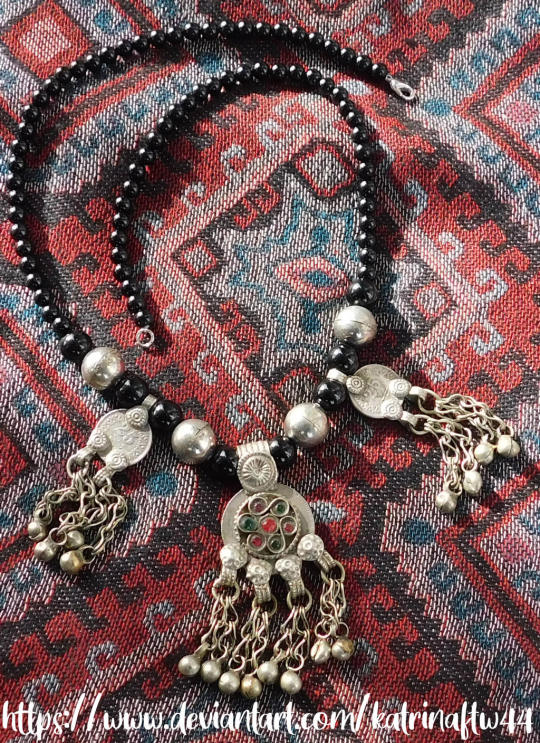
I made this using black onyx beads and some Kuchi decorated coin pendants I got off of Etsy. The sliver beads are also Kuchi made.
I admire Kuchi metal work and jewelry and have no intention of cultural appropriation.
Kuchi people are a Pashto tribe residing in Afghanistan, Pakistan and India. They are known for their metal work and amazing tribal jewelry.
0 notes
Link
Check out this listing I just added to my Poshmark closet: Vintage Tribal Kuchi Lapis Teardrop Boho Necklace.
0 notes
Link
Check out this listing I just added to my Poshmark closet: Modernist Necklace Purple Kuchi Tribe Metal Fan Design Vintage 23 Inches.
0 notes